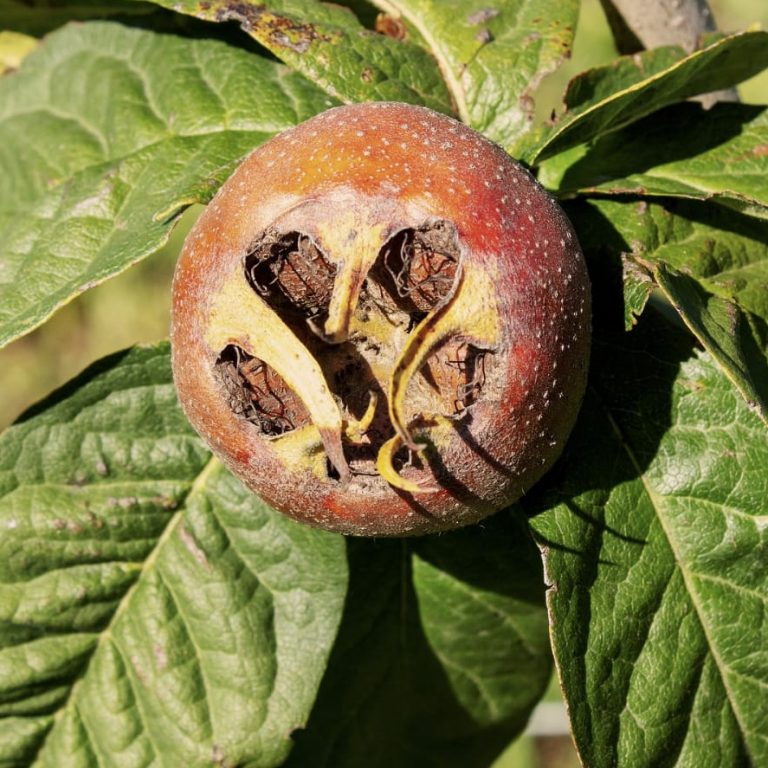What's in Season: November

Medlars are in season now and they are a great source of vitamin C.
Medlars used to be a very popular fruit, but they have fallen out of fashion over the decades – probably due to people being reluctant to eat fruit that needs to be bletted. Bletting is allowing the fruit to go semi-rotten before eating them. This over-ripening is brought on after the first frost when the fruit turns brown and soft.
Medlars can be eaten raw, but they are great in preserves, desserts and fruit leathers.
Medlar trees can be purchased to grow in your own garden, but being a native tree, fruits can also be foraged.
Medlar fruits are quite distinctive and don’t look very attractive. For this reason, they have gained nicknames such as the dog’s arse fruit and open-arse fruit from authors as famous as Chaucer & Shakespeare. Medlars were mentioned by the bard in Timon of Athens, Measure For Measure, As You Like It and Romeo & Juliet. This fact alone should intrigue you enough to give them a try!
We have planted a Medlar tree in our food forest and we are looking forward to eating our own fruits within the next few years.
Other produce that is good to eat in November
Vegetables
Beetroot
Brussel Sprouts
Cabbage
Cauliflower
Kale
Leeks
Parsnips
Pumpkin
Swede
Turnips
Winter Squash
Herbs
Common Sorrel
Rosemary
Sage
Sweet Cicely
Winter Savory
Hedgerow
Field Mushroom
Hazlenut
Jew’s Ear
Medlars
Oyster Mushroom
Rosehips
Sloe Berries
Sheep Sorrel
Sweet Chestnut
Walnut
Fruit
Apples
Cranberries
Medlar
Pears
Quince
Rosehips
Sloe Berries
Meat & Game
Goose
Grouse
Hare
Patridge
Pheasant
Rabbit
Venison
Fish
Hake
Herring
Pollack
Sardine
Scallops
Sole
